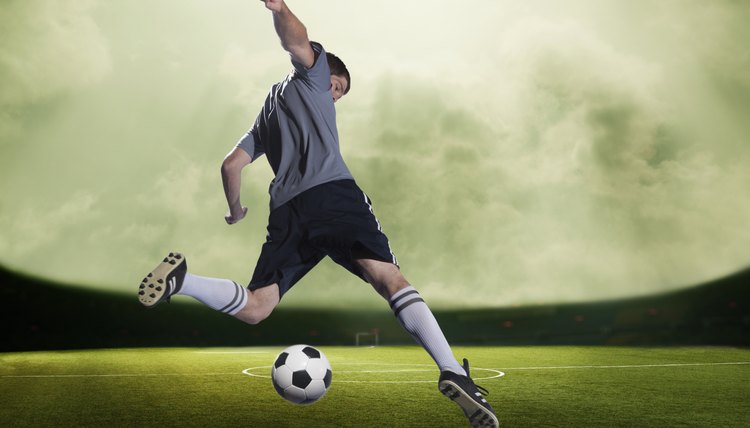Can You Play Soccer With No ACL?

The anterior cruciate ligament, or ACL, is vital for athletes, especially in sports that require starting and stopping. There are some players who can function without an ACL and still play effectively, even in the demanding running and cutting sport of soccer.
About the ACL
The ACL is one of four main ligaments in the knee. According to Medline Plus, the ACL is located in the middle of the knee and responsible for rotational stability in the knee, supporting the knee during movements. Medline notes that the ACL gets its name because it forms a cross ("cruciate"), or an X, across the knee with the posterior cruciate ligament, or PCL. ACL injuries often happen in conjunction with other knee injuries, according to Medline Plus.
The ACL in Soccer
The ACL is very important in soccer and other sports that require lots of running with starting and stopping. According to the Sports Injury Clinic, the ACL is vital to moves like changing directions, twisting and pivoting. All of these moves happen continuously during soccer, so the ACL is constantly at work during a match.
Reason for a Missing ACL
Most people who are missing an ACL do not have one because of a prior injury. According to Slate author Juliet Lapidos, injured ACLs can gradually deteriorate and eventually disappear if they are not repaired or if surgery is done improperly. For example, professional athletes DeJuan Blair and Hines Ward competed without ACLs due to youth injuries that had not been reconstructed.
Playing without an ACL
Soccer, like football and basketball, places significant demands on the ACL because of the constant starting, stopping and changes in direction. According to Elite Soccer Conditioning, the ability to start and stop is key to soccer success. Playing soccer without an ACL would be tough if not impossible for most immediately after an injury, and Slate notes that further injury could result immediately. This is due to the fact that the knee could become unstable and the other surrounding ligaments and muscles might not yet be strong enough to support the extra weight. However, some athletes, like pro football player Phillip Rivers, have been able to wear a brace and participate, since the brace acts as a stabilizer to the knee joint. Soccer players would have a more difficult time with this because much more running, cutting and movement is involved. In the case of an athlete who is missing an ACL from youth -- what Slate calls a gradual deterioration of the ligament -- the athlete's quadriceps, hamstrings and other knee tissues might be able to pick up the slack, the athlete might notice little difference and he would have a better chance to compete than an athlete that injured his ACL as an adult. In time, though, athletes without an ACL are at a higher risk of getting knee damage or ending up with osteoarthritis, according to Slate.
References
Writer Bio
Based in Harker Heights, Texas, Timothy Onkst has been writing about sports, fitness and health since 2003. His articles have appeared in a variety of publications including "Texas Roundball" magazine, Yahoo Sports, Fox Sports and other websites.
